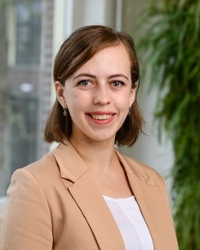On May 16 2024, Elisabeth (Lis) Kerr , who is currently finishing her PhD research at Leiden University (Netherlands), obtained a 3-year postdoctoral fellowship from the Research Foundation – Flanders (FWO) for research on a project titled “Modelling Bantu Analytic Morphosyntax (MBAM): The Mbam languages as a case study in morphosyntactic change“. The abstract can be found below. Her research will be co-hosted by BantUGent (under the supervision of Prof. Koen Bostoen) and ΔiaLing (under the co-supervision of Prof. Anne Breitbarth and Prof. Alexandra Simonenko). Welcome to BantUGent, Lis!

Abstract
Over time and space, languages can change fundamentally in their structure (morphosyntax). A key example of such variation is the change between analytic and synthetic morphosyntax. Such variation is clearly visible within Niger-Congo, the world’s largest language phylum. On the synthetic side, the Bantu family is particularly well-known in theoretical linguistics for its complex verb forms. Bantu’s closest relatives within Niger-Congo’s Benue-Congo branch, on the other hand, show much more analytic morphosyntax, expressing in multiple words what many Bantu languages typically express using a single verb form. While it is clear that morphosyntactic change has taken place within the Niger-Congo phylum, it is still debated in what direction(s) this change occurred and how such change can be captured in formal models. This debate within Niger-Congo studies reflects a more general question about variation and directionality of morphosyntactic change crosslinguistically. This project will contribute to this theoretical debate about the mechanisms of analytic ↔ synthetic morphosyntactic change by using a case study of the Mbam languages of Cameroon, a group of closely-related Bantu languages with an intermediary morphosyntactic profile. By developing a model to capture the synchronic and diachronic variation in the degree of analyticity of the Mbam languages, the results will contribute to the fields of historical linguistics, theoretical syntax, and African languages.